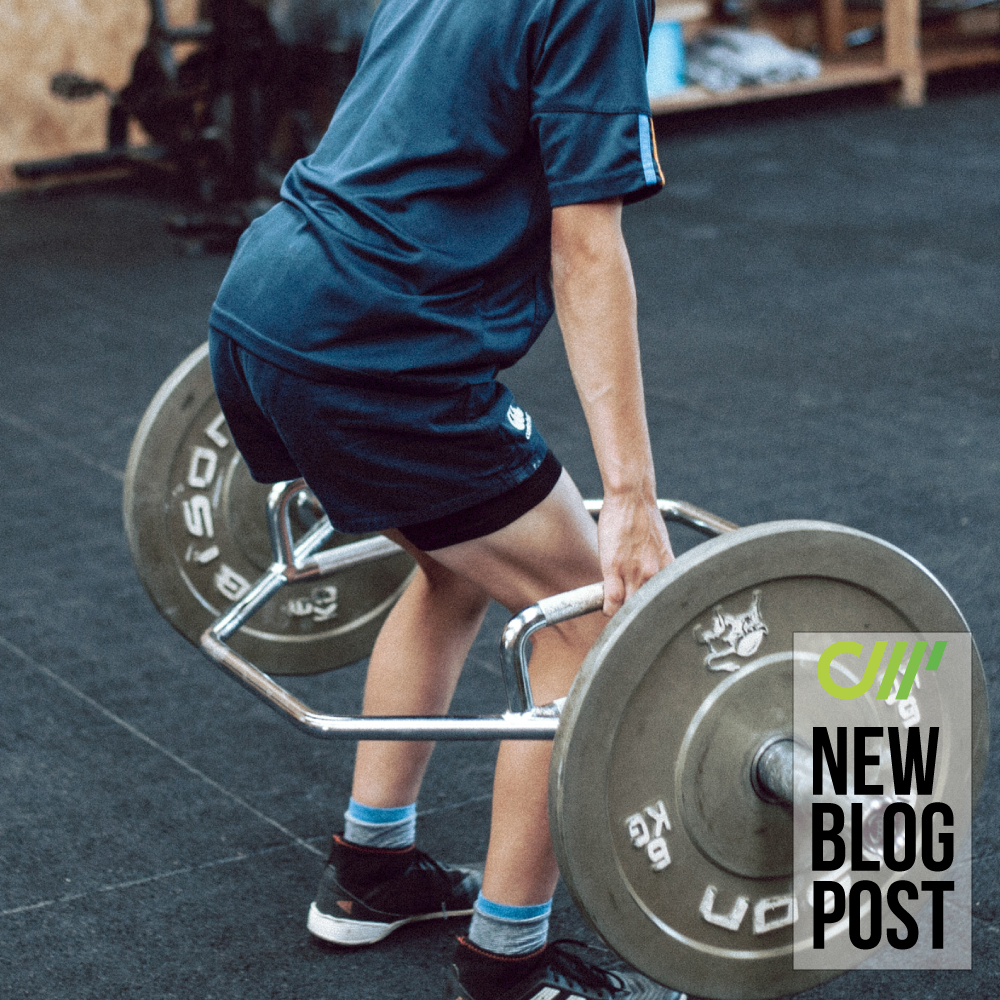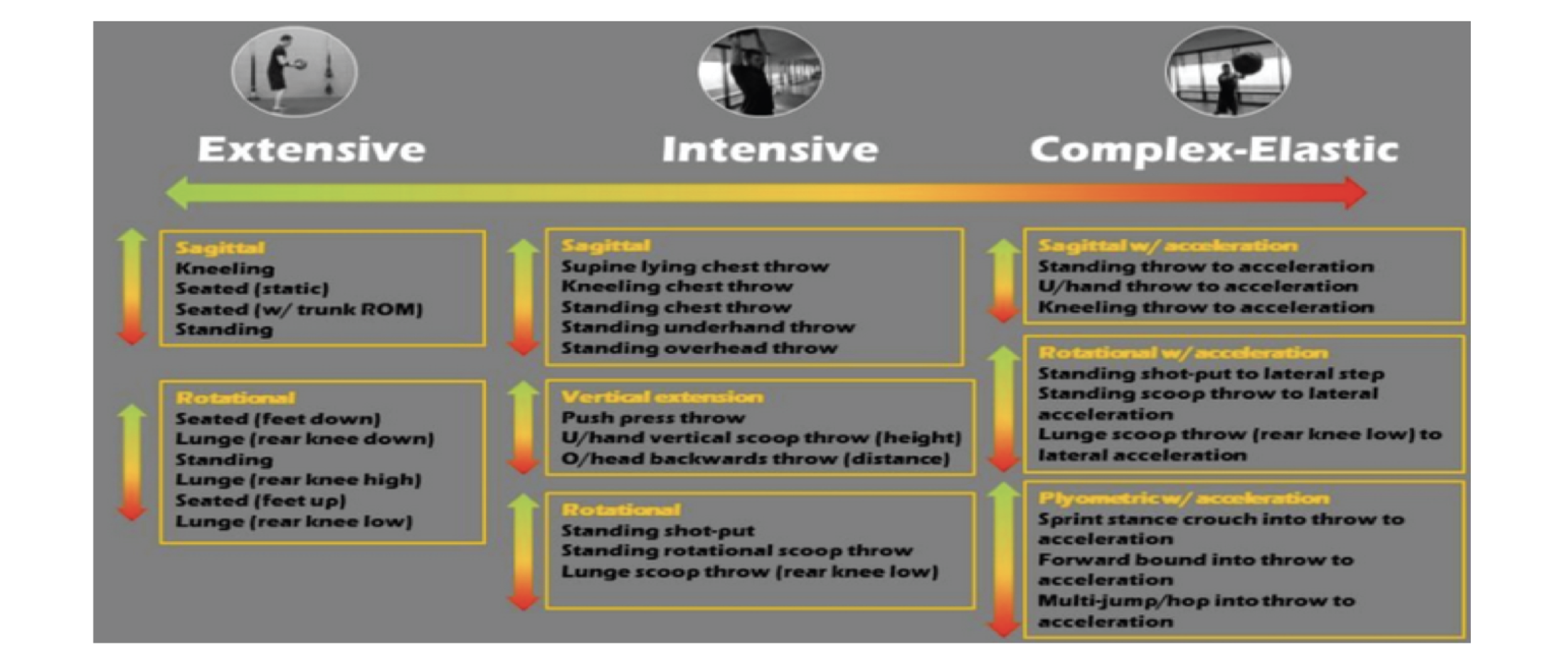Trunk Training for the Youth Athlete
Part 1 (Read here) of this series discussed the anatomy of the different muscles of the trunk and how this determines function as well as how you can categorise your trunk training to maximise your athletic performance
Part 2 (Read here), introduced the concept of low load stability and why it can serve as a great foundation for more advanced trunk work to follow.
Today’s post will focus on high load stability trunk training.
High Load Stability/Trunk Strength
Whilst low load stability trunk exercises are designed to improve the capacity of a specific area to tolerate repetitive loading, once a high load of capacity has been developed in all planes we can begin to include exercises that improve strength of the core musculature. This means we need to start incorporating heavier loads which force the trunk to ‘brace’ in order to maintain posture.
The highest loads will always be lifted in up and down movements. There is a reason why no one is lateral raising a weight that they can squat or deadlift.
However, there are still means of introducing/assessing trunk control in multiplanar, high load situations, examples of which are listed below.
· Sagittal plane- Can the athlete maintain a neutral spine whilst under heavy loads (think squats and deadlift variations).
· Frontal plane- Can the athlete maintain posture (knees in line with toes, torso not falling towards or leaning away from a given side etc) in the presence of asymmetrical load? (Examples of high load stability challenges in the frontal plane include lunges with more weight on one side, offset barbell step ups, suitcase carry…).
· Transverse plane- Can the athlete maintain balance over their base of support whilst performing multidirectional hop and holds? (Remember, load doesn’t just have to come in the form of more weight…speed itself will increase the amount of force the body has to stabilise against…It is much harder to put the brakes on when sprinting vs stopping after a gentle jog).
Whilst squats and deadlifts can go a long way in developing high load trunk stability in our athletes, it is a mistake to assume they take care of everything. A study reporting greater abdominal activation with overhead squats compared to regular back squats (Aspe & Swinton 2014) also demonstrates the potential for long lever trunk work (e.g. ab wheel roll outs, hanging leg raises, long lever planks)
Another reason why we need more than just squats and deadlifts is because athletes need to have the ability to resist unwanted or excessive movement in 3 dimensions. This means our trunk training must consist of exercises that allow our athletes to:
· Resist extension (Mike Boyle has some great regressions and progressions here)
· Resist flexion (think deadlifts)
· Resist lateral flexion or side bending (think suitcase carries and their variations)
· Resist rotation (for example pallof presses)
Trunk Power/Rate of Force Development
Trunk power training exercises are designed to improve the rate of force production by the core musculature. These exercises prepare an athlete to stabilise and to generate force dynamically at more sport specific speeds.
It is imperative that your athlete has appropriate trunk stability and lumbo-pelvic stability prior to progressing onto advanced trunk power exercises.
If athletes haven’t developed the ability to stabilise their trunk in all 3 planes, at slow (or in the case of static positions…no) speed, then coaches should tread carefully with the more complex, medicine ball combinations.
#block-910c6c726979ec5fcc49 {
}
(Credit to Eamon Flanagan for this graphic)
Coaches can gradually introduce multiplanar med ball throws by starting towards the extensive end of the spectrum. With youth athletes who may lack the necessary stability to take advantage of the more explosive medicine ball trunk exercises, building them from the ground up (i.e. progressing from seating, to kneeling, to standing) can be a logical way to begin.
The amount of medicine ball variations can be exhausting and probably warrants a post in itself…for simplicity’s sake, select exercises that progressively challenge dynamic stability, allow the athlete to be explosive, and ideally includes an element of rotation if you’re working with a multidirectional athlete.
Whilst I am not recommended variation for variation sake, nor am I suggesting you don’t coach the athlete in front of you, however, simply exposing youth athletes to medicine ball throws can work wonders for teaching weight transfer.
In the final part of this trunk training series we will discuss how to piece together the trunk training puzzle to optimise the benefits your athlete should be gaining.
Conclusion:
· Heavy squats and deadlifts challenge the ability to develop high load trunk stability
· Offset step ups and offset loaded carries can develop high load trunk stability in the frontal plane
· Medicine ball throwing variations are a great tool for developing explosive capabilities of the trunk musculature
References
Aspe, R. R., & Swinton, P. A. (2014). Electromyographic and kinetic comparison of the back squat and overhead squat. The Journal of Strength & Conditioning Research, 28(10), 2827-2836.
About The Author
Todd Davidson is a UKSCA accredited Strength and Conditioning Coach currently working at Downe House school, in charge of the scholarship athletes\’ strength and conditioning program whilst introducing athletic development into the P.E curriculum.Todd\’s current interest on youth athletes was sparked by gaining experience with University, Paralympic and Olympic athletes as part of his internship roles with Duham University, Middlesex County Cricket Club and the English Institute for Sport, with GB Boxing and Paralympic Table Tennis, and speaking to other practitioners as to how this journey can be scaled more effectively to reduce injury risk, enhance performance and improve athletic development in youth athletes.
Todd can be found via:
Twitter: @todddavidson93
Facebook: search Todd Davidson P2P coaching
Instagram: @ToddDavidsonP2Pcoaching
#block-yui_3_17_2_1_1565976873073_31974 {
}


